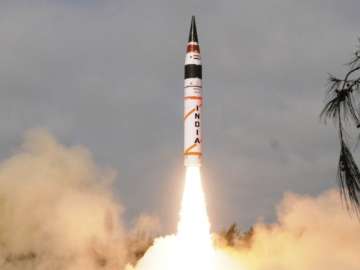New Delhi: May 11 is observed as the National Technology Day every year to honour the history of India’s technological inventions and knowledge. One of the biggest reasons this day hold significance is that it was on this day that India successfully tested nuclear bombs in Pokhran (Rajasthan) on May 11, 1998, to exhibit its defence skills. It was the country's second nuclear test.
The day has been observed as the National Technology Day since then and major technological developments, particularly in furthering defence might, have been unveiled on this very day. The first indigenous aircraft "Hansa-3" was test flown from Bengaluru. India performed a successful test firing of the Trishul missile on the same day and also executed three successful nuclear tests, carried out at Pokhran, in Rajasthan.
Also read: North is preparing for 5th nuclear test: Seoul
Here are the 5 things to know about Pokhran II:
- In May 1998, at the Indian Army's Pokhran Test Range, a sequence of five nuclear bomb test explosions were conducted by India. This was the second Indian nuclear test. On May 1974, the first test was conducted code-named ‘Smiling Buddha’.
- Pokhran-II had five successfully carried out explosions. The first among the five was a fusion bomb (a pure fusion weapon is a hypothetical hydrogen bomb design that does not need a fission "primary" explosive to ignite the fusion of deuterium and tritium, two heavy isotopes of hydrogen) and the remaining four were fission bombs (A boosted fission weapon usually refers to a type of nuclear bomb that uses a small amount of fusion fuel to increase the rate, and thus yield, of a fission reaction).
- These nuclear tests resulted in a huge political agreement against India by a number of major states, including Japan, the United States and more.
- On May 11, 1998, 'Operation Shakti' (Pokhran-II) was initiated with the detonation of one fusion and two fission bombs. And two days later, on May 13, 1998, two additional fission devices were detonated. The Indian government, which was then led by Prime Minister Atal Bihari Vajpayee, also organized a press conference declaring India as a full-fledged nuclear state.
- Many names are credited to these tests; formerly, they were called Operation Shakti-98 (Power-98), and the five nuclear bombs were designated Shakti-I, II, III, IV and V.
Latest Business News
